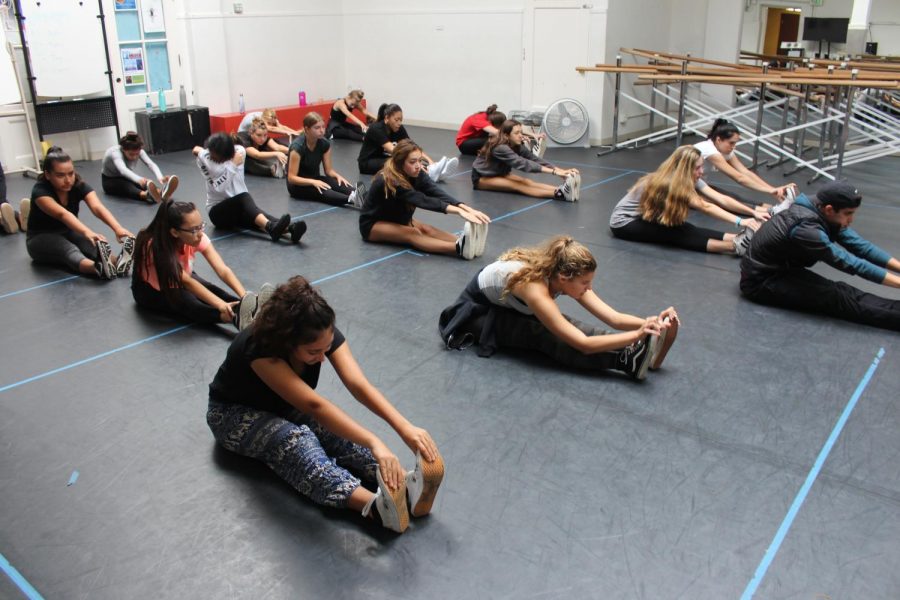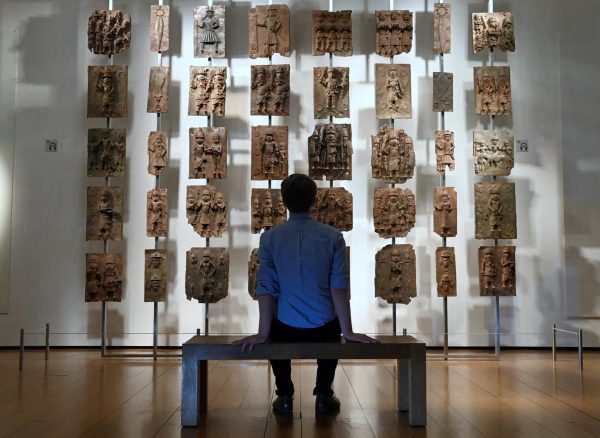Middle School Spotlight: Harms of the extrovert ideal
Photo credit: Cybele Zhang
Upper school students participate in a master class with “Hamilton” cast member, Jacob Guzman. Introverts may find it harder to perform in front of an audience or take on leadership roles in the dance program than extroverts.
Middle School Spotlight is an occasional series showcasing Archer middle school students who are learning about journalism. These were written for a class assignment then submitted to The Oracle. Outstanding pieces were selected for publication by the Editorial Board.
Extroverts are usually celebrated in today’s society. Introverts and even ambiverts are not usually favored when it comes to expectations in the work force, education and their daily lives.
According to a survey I conducted, 40 percent of all seventh graders are introverts, 32 percent are ambiverts and 28 percent are extroverts.
“I tend to [only try public speaking, raising my hand, and participating] when I’m 100 percent sure that I’ll [do well],” introvert Lauren Robson ’22 said.
The Extrovert Ideal is a phenomenon that we see everyday; society rewards those with extroverted qualities. Society sees people as more important when they are leaders. Leaders are usually outgoing and show an interest in actively and constantly working with others. Introverts, however, may feel that they are really not capable of being effective leaders in today’s society.
Archer rewards leadership, commending extroverts, while introverted and ambiverted students may feel confusion as to how to be an effective leader.
“School is hard for me [during] group projects, public speaking, and participation,” Katelyn Chi ’22 an introvert, said. “Some classes feel like you have to be an extrovert to succeed.”
Another extroverted trait is risk-taking. Archer pushes girls to have the confidence of a boy, when it comes to taking risks and not worrying about being judged about the outcome of action.
“I do feel Archer is an extrovert-centered campus, making it harder for introverted students to showcase their strengths,” English teacher Wendy Deming said.
Being an extrovert, ambivert or introvert is not a choice. These attributes are wired in our brains, so we cannot control being one or another. In Liz Fosslien and Mollie West’s Quiet Revolution article, “6 Illustrations That Show What it’s Like in an Introvert’s Head,” they said, “As [introverts]p rocess information, introverts are carefully attending to their internal thoughts and feelings at the same time”.
Extroverts and introverts tend to gravitate towards like types depending on which they are. Archer seventh graders are friends with mostly girls of the same mindset, and some girls find it hard to deal with people who don’t classify themselves as the same type as the girl herself.

Cybele Zhang joined the Oracle writing staff in 2015. She was promoted to Sports Editor as a sophomore and to Editor-in-Chief as a senior. Cybele graduated...












Stephanie Harrison • Mar 16, 2018 at 11:46 am
Jacqueline,
I loved this article! You where specific and supported each of you points with lots of evidence. My one critique is that you have a spelling error when you write, “As [introverts]p rocess…”. Other wise it was a great article and I can’t wait to read more from you.
Larisa Carter • Oct 9, 2017 at 9:16 am
Great job synthesizing several sources (your poll at Archer, quotes from several students and faculty, and the two links provided) into an interesting perspective that affects many students (and faculty) here at Archer!
Justine Moore • Oct 8, 2017 at 10:23 pm
I love this article Jacko! You wrote it beautifully and as an introvert I can relate to this. Keep up the good work!